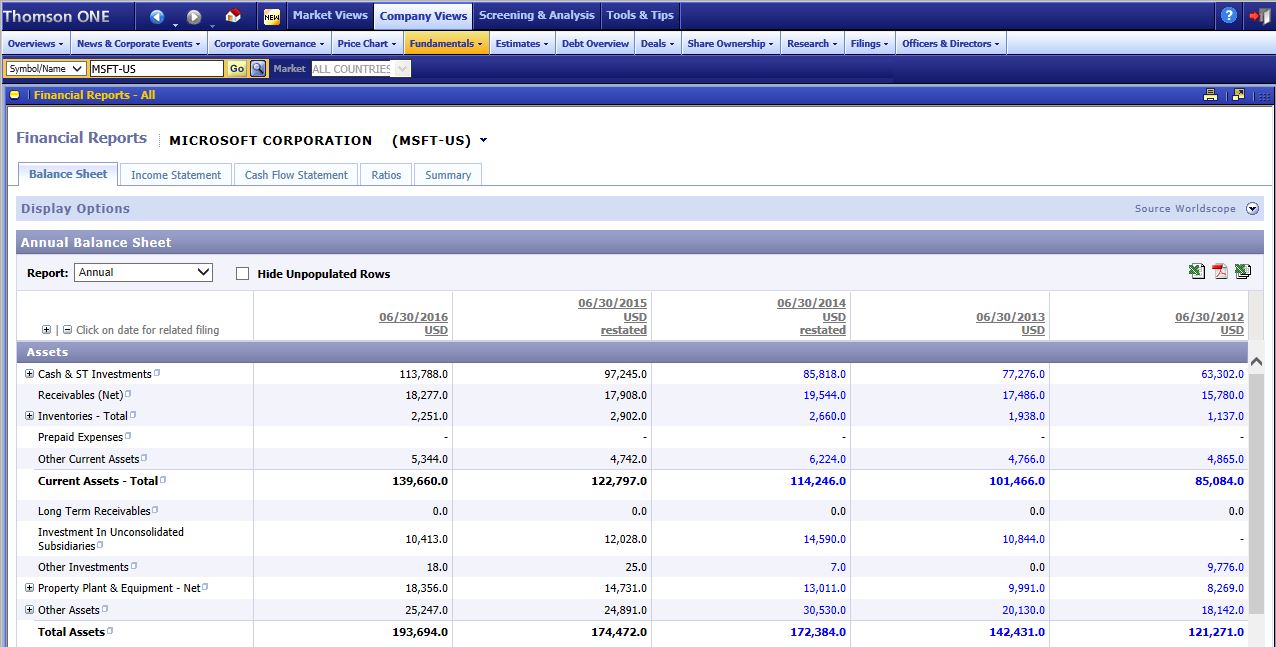How do I reference financial reports and data… in the Cranfield Author-date style?
23/05/2017

We all know how to cite and reference from books, journals, the internet and even blog posts, but what about financials? Just as you would do with information from other sources, data retrieved from a specialist finance resource should be acknowledged in the same way.
The format for referencing financials in Cranfield Author-date style – whether a financial report or a set of financial data – is essentially the same.
Here’s what you need to include in your reference:
- Publishing organisation or author
- (Year of publication/last update)
- ‘Title or section of report’ OR ‘Title of data extract’,
- Name of the database the data was retrieved from (in italics).
- Available at: URL/subscription service.
- (Accessed: date).
And how your references should look:
Bloomberg (2017) ‘Tesco PLC daily share price 2011-2016’, Bloomberg Professional. Available at: Bloomberg subscription service. (Accessed: 2 March 2017).
Thomson Reuters (2017) ‘Microsoft Corporation annual balance sheet 2012-2016’, Thomson One. Available at: https://www.thomsonone.com (Accessed: 28 February 2017).

What about your in-text citations?
Where you make reference to these in your text, follow the normal ‘name and date’ conventions and simply follow any mention with (Bloomberg, 2017) or (Thomson Reuters, 2017), or a variation thereon.
What if you want to copy a table from one of the resources into your assignment?
If you’re replicating a table of data in your work which you’ve taken directly from one of our resources, you’ll need to reference it. Even if you’ve adapted it in some way, you’ll still need to give credit to the source. Read our previous post on referencing images, diagrams, charts or tables to find out how.
Any questions?
As always, if you have any questions about referencing, please contact MIRC or the Kings Norton Library.
Feature image from Pixabay. Available at: https://pixabay.com/photos/stock-trading-monitor-business-1863880/
Categories & Tags:
Leave a comment on this post:
You might also like…
Keren Tuv: My Cranfield experience studying Renewable Energy
Hello, my name is Keren, I am from London, UK, and I am studying Renewable Energy MSc. My journey to discovering Cranfield University began when I first decided to return to academia to pursue ...
3D Metal Manufacturing in space: A look into the future
David Rico Sierra, Research Fellow in Additive Manufacturing, was recently involved in an exciting project to manufacture parts using 3D printers in space. Here he reflects on his time working with Airbus in Toulouse… ...
A Legacy of Courage: From India to Britain, Three Generations Find Their Home
My story begins with my grandfather, who plucked up the courage to travel aboard at the age of 22 and start a new life in the UK. I don’t think he would have thought that ...
Cranfield to JLR: mastering mechatronics for a dream career
My name is Jerin Tom, and in 2023 I graduated from Cranfield with an MSc in Automotive Mechatronics. Originally from India, I've always been fascinated by the world of automobiles. Why Cranfield and the ...
Bringing the vision of advanced air mobility closer to reality
Experts at Cranfield University led by Professor Antonios Tsourdos, Head of the Autonomous and Cyber-Physical Systems Centre, are part of the Air Mobility Ecosystem Consortium (AMEC), which aims to demonstrate the commercial and operational ...
Using grey literature in your research: A short guide
As you research and write your thesis, you might come across, or be looking for, ‘grey literature’. This is quite simply material that is either unpublished, or published but not in a commercial form. Types ...






